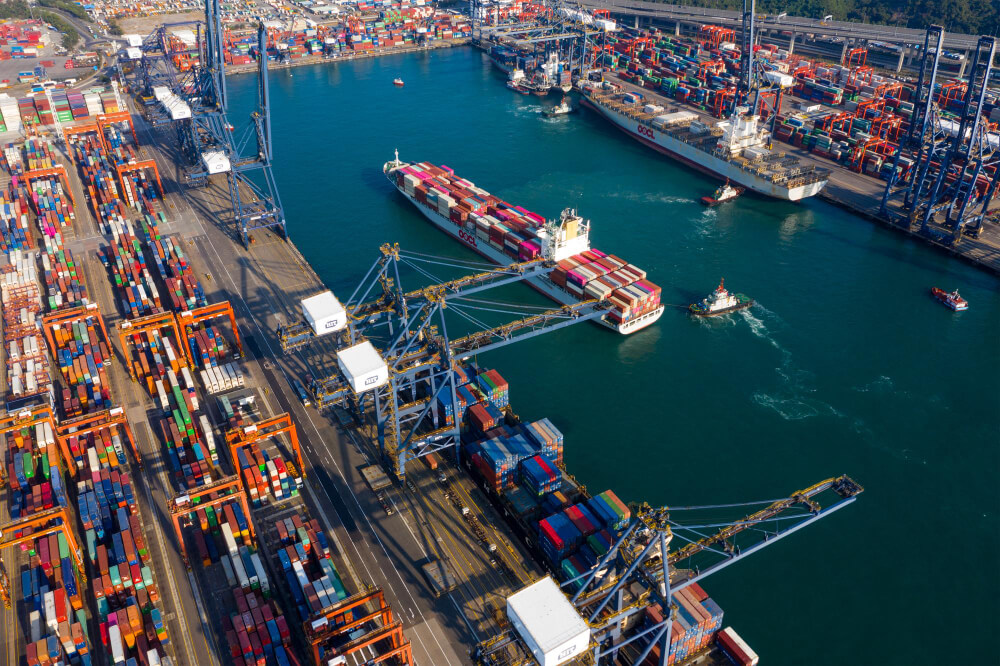If you’re new to shipping, you may use context to understand shipping terms. However, that could cost you dearly. Many charges such as LCL use acronyms and if you don’t know what they mean, you can’t minimize your operating costs. And in the worst case scenario, you could find yourself in legal trouble because you don’t have a good understanding of terms such as wharfage, duty, or embargo.
That’s where a shipping glossary comes in. This is a collection of words used in the industry and their meaning. With a glossary, you’re equipped to discuss with shipping entities.
In this blog, you’ll discover common words used in the shipping industry.
What Are Shipping Terms?
These terms are words and acronyms that hold specific meaning in the shipping industry. As for the acronyms, shipping companies and the related governmental bodies and organizations use them to quickly convey information. Therefore, you need to understand their definition if you want to efficiently operate in the shipping industry.
Shipping Terms and their Definitions
Here are some of the most common words and acronyms used in the shipping industry:
AIS
The Automatic Identification System uses satellites to locate and identify ships.
Aggregate Shipment
A collection of shipments from different businesses which a carrier is transporting together in one shipment.
Balloon Freight
A freight that has a low weight but takes a considerable amount of space.
BOL
A Bill of Lading is a receipt from a carrier or their agent which acknowledges that they have received a cargo. Its other abbreviations are: B/L and BoL.
Box
A common name for a carrier.
Brake Horsepower
A unit of power and speed of productivity and engines.
Break Bulk
Cargo stored in a ship’s hold without using containers or bulk cargo. Breaking bulk refers to partial unloading of a rail car.
Bulk Head
A partition on a vessel. It can prevent damage to cargo by reducing their movement as the vessel moves. It can also provide an air supply and strengthen the vessel.
Cargo
The freight transported. It can refer to goods and products.
Carrier
A business, individual, or partnership that offers the service of transporting goods or people.
Common Carrier
A barge line that has a license to transport throughout a nation.
Customs
A fee on imported goods. This shipping term also refers to the US Customs and Border Protection.
Demurrage
A fee you must pay if your cargo stays on the wharf beyond its time allowance.
Dockage
A charge on the water frontage utilization given out by the port authority.
Duty
A tax on imported goods.
DWT
Dead Weight Tonnage is the maximum weight of a vessel including what it carries.
Embargo
A ban or sanction. It can affect trade, tariffs, and other transactions.
Export
A shipment of merchandise out of a nation.
Freight Rates
A shipping line’s price list to transport freights in their vessels to a destination.
FTZ
The Free Trade Zone is an area in the USA where they hold goods regardless of their origin until they can enter the international market. In this zone, samples, tests, repackaging, and relabeling occurs. Its other name is Free Zone.
Intermodalism
A transportation system whereby a cargo has dimensions that allow it to seamlessly travel via multiple modes of transport.
IMO
The International Maritime Organization is a United Nations agency tasked with improving the safety of shipments and reducing the pollution from shipping in the world.
LCL
Less than Container load is a measure of goods which partially fill a container.
LOA
The Length Overall is a measure of a vessel from its bow to its stern.
LTL
Less than Truckload is a measurement of shipment. It means that the shipment doesn’t use the entirety of the space in its container.
Knot
A measurement of speed for vessels on water bodies. 1 knot is 1.15 miles.
Manifest
A document from the shipper listing the cargo on a ship.
Pallet
A type of platform where you can place cargo. Its structure allows you to stack cargo and transport it with a forklift truck.
Pier
A structure that extends from the shore, through the water. Ships use it to moor and handle cargo. Its other name is finger pier.
Reefer
An environment-controlled container which you can control with a computer.
Ro/Ro
The Roll-on-Roll-off are vessels that transport equipment with wheels and other vessels. Its other names are: RoRo and Roll on/Roll off.
Shipper
A person or organization that pays an individual or business to transport its cargo from one place to another destination.
SOLAS
The Safety of Life at Sea is a collection of emergency equipment a ship must have and the safety procedures it must adhere to.
Steamship
Another name for ocean carriers and motor vessels. This shipping term comes from the time when boats used steam to power themselves.
Stripping
The activity whereby you remove cargo that was in a container.
Tariff
The organization of duties on imports due to the government. It also refers to the tables of charges and rates of a carrier.
TEU
Twenty Foot Equivalent Unit is a measurement of space used to denote the capacity of a container. It equals the space a 20 ft container takes up.
Way Bill
A document that has the identity of the shipper and consignee, route, goods description, rates, weight of a shipment, among other crucial facts.
WCO
The World Customs Organization gathers customs departments of 170 nations to discuss and work together on problems in customs.
Wharfage Fee
A fee for handling cargo. You pay this fee either to the wharf or pier owner.
Conclusion
Now you know common shipping terms and what they mean in this context. These words and acronyms may have other meanings outside of the shipping industry. However, to understand them in this context, you need to use the above definitions. Moreover, these acronyms are shorthand which convey information quickly. So, understanding these terms allows you to understand shipping documents and saves you time. Now, you can cross-check shipping documents with this glossary. So, take advantage of this knowledge to get a better deal.





